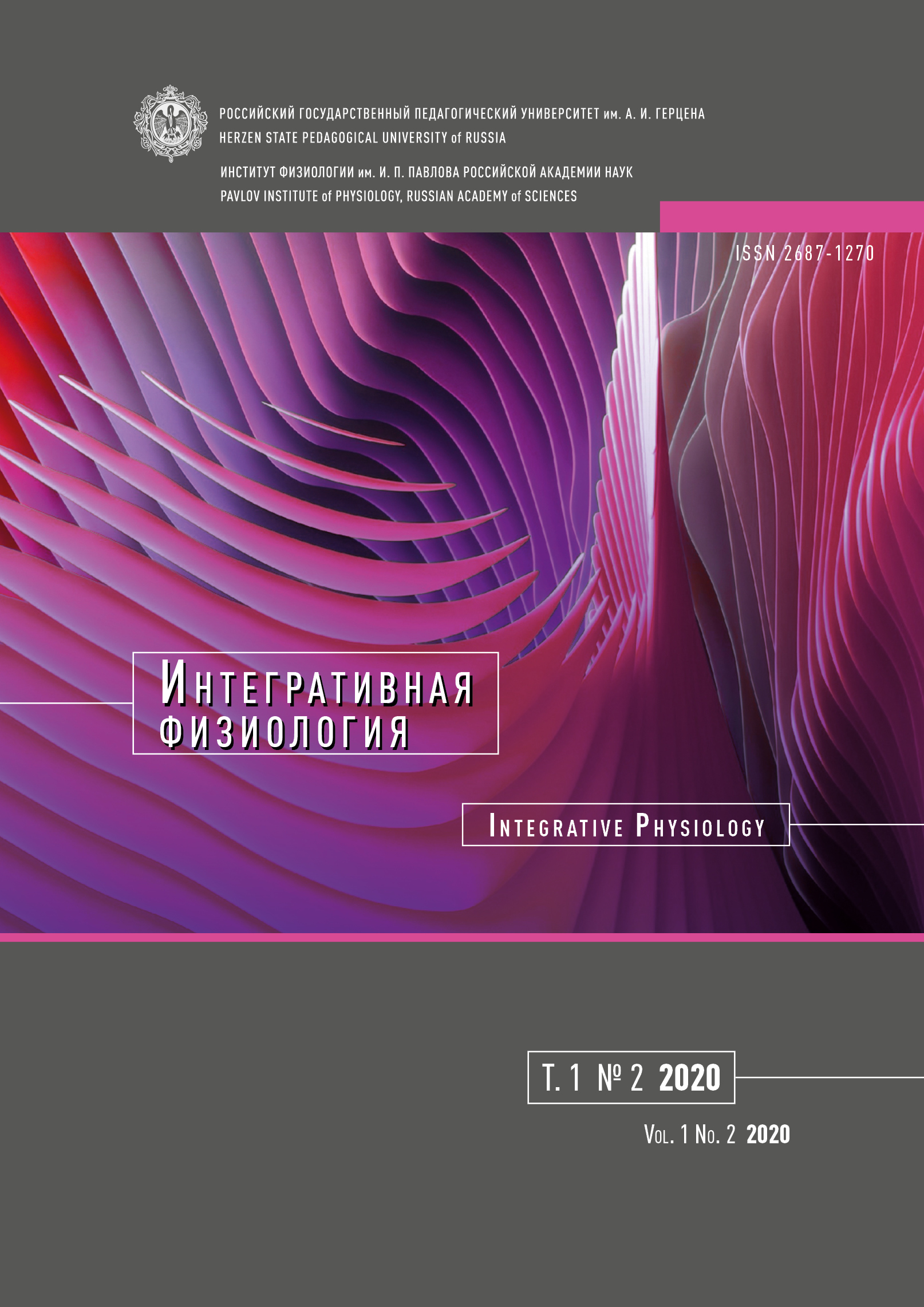Insight and stress
DOI:
https://doi.org/10.33910/2687-1270-2020-1-2-147-150Ключевые слова:
insight, heuristic type of thinking, stress, functional magnetic resonance imaging (fMRI), neural networksАннотация
The development of neurotechnology in recent years and the creation of self-contained artificial systems that provide purposeful activity and decision-making under stress has substantiated the necessity to develop neurophysiological research of insight (Wechsler 2014). The purpose of our study was to develop an insight modelling technology and to verify it empirically in the course of experimental research on the neurophysiological mechanisms of visual insight using objective measurement methods. Insight has 3 stages: the indeterminacy stage, the stage of insight, and the post insight period. The classical Selye model of stress can also be decomposed into the following 3 time periods: pre-stress, stress, post-stress. Although an insight period and a stress period may have similar or different time scales, what is important is common periodicity, involving the same cortical and subcortical parts. The neurophysiological mechanisms of insight in solving problems of visual recognition of contour objects were studied using psychophysical testing methods and objective measurements (Hess, Field 1999; Kounios, Beeman 2014). In our study we identify the instant of insight occurrence with the image recognition threshold under conditions of indeterminacy. A computerised version of the Gollin figure test determining the recognition threshold for incomplete fragmentary images was chosen as a model of insight. In order to analyse the distribution of activity in the human brain and the state of neural networks during the perception of the gradual increase in the contour of the image and in the process of insight development, we applied the method of functional magnetic resonance imaging (fMRI).
Библиографические ссылки
Ardila, A., Bertolucci, P. H., Braga, L. W. et al. (2010) Illiteracy: The neuropsychology of cognition without reading. Archives of Clinical Neuropsychology, vol. 25, no. 8, pp. 689–712. PMID: 21075867. DOI: 10.1093/arclin/acq079 (In English)
Foreman, N., Hemmings, R. (1987) The Gollin incomplete-figures test: A flexible, computerised version. Perception, vol. 16, no. 16, pp. 543–548. PMID: 3444734. DOI: 10.1068/p160543 (In English)
Hess, R., Field, D. (1999) Integration of contours: New insights. Trends in Cognitive Sciences, vol. 3, no. 12, pp. 480–486. PMID: 10562727. DOI: 10.1016/s1364-6613(99)01410-2 (In English)
Kounios, J., Beeman, M. (2014) The cognitive neuroscience of insight. Annual Review of Psychology, vol. 65, pp. 71–93. PMID: 24405359. DOI: 10.1146/annurev-psych-010213-115154 (In English)
Kraft, A., Grimsen, C., Kehrer, S. et al. (2006) Neurological and neuropsychological characteristics of occipital, occipito-temporal and occipito-parietal infarction. Cortex, vol. 56, pp. 38–50. PMID: 23206528. DOI: 10.1016/j.cortex.2012.10.004 (In English)
Saaty, T. L. (2008) The analytic hierarchy and analytic network measurement processes: Applications to decisions under risk. European Journal of Pure and Applied Mathematics, vol. 1, no. 1, pp. 122–196. (In English)
Shelepin, K. Yu., Pronin, S. V., Shelepin, Yu. E. (2015) Recognizing fragmented images and the appearance of “insight”. Journal of Optical Technology, vol. 82, no. 10, pp. 700–706. DOI: 10.1364/JOT.82.000700 (In English)
Shelepin, K. Yu., Shelepin, Yu. E. (2015) Neirofiziologija “insajta” [Neurophysiology of the “insight”]. Peterburgskij psikhologičeskij žurnal, vol. 11, pp. 19–38. (In Russian)
Shelepin, K. Yu., Trufanov, G. E., Fokin, V. A. et al. (2018) Digital visualization of the activity of neural networks of the human brain before, during, and after insight when images are being recognized. Journal of Optical Technology, vol. 85, no. 8, pp. 468–475. DOI: 10.1364/JOT.85.000468 (In English)
Wechsler, H. (2014) Neural networks for perception. Vol. 1: Human and machine perception. New York: Academic Press, 542 p. (In English)
Загрузки
Опубликован
Выпуск
Раздел
Лицензия
Copyright (c) 2020 Константин Юрьевич Шелепин

Это произведение доступно по лицензии Creative Commons «Attribution-NonCommercial» («Атрибуция — Некоммерческое использование») 4.0 Всемирная.
Авторы предоставляют материалы на условиях публичной оферты и лицензии CC BY 4.0. Эта лицензия позволяет неограниченному кругу лиц копировать и распространять материал на любом носителе и в любом формате в любых целях, делать ремиксы, видоизменять, и создавать новое, опираясь на этот материал в любых целях, включая коммерческие.
Данная лицензия сохраняет за автором права на статью, но разрешает другим свободно распространять, использовать и адаптировать работу при обязательном условии указания авторства. Пользователи должны предоставить корректную ссылку на оригинальную публикацию в нашем журнале, указать имена авторов и отметить факт внесения изменений (если таковые были).
Авторские права сохраняются за авторами. Лицензия CC BY 4.0 не передает права третьим лицам, а лишь предоставляет пользователям заранее данное разрешение на использование при соблюдении условия атрибуции. Любое использование будет происходить на условиях этой лицензии. Право на номер журнала как составное произведение принадлежит издателю.







